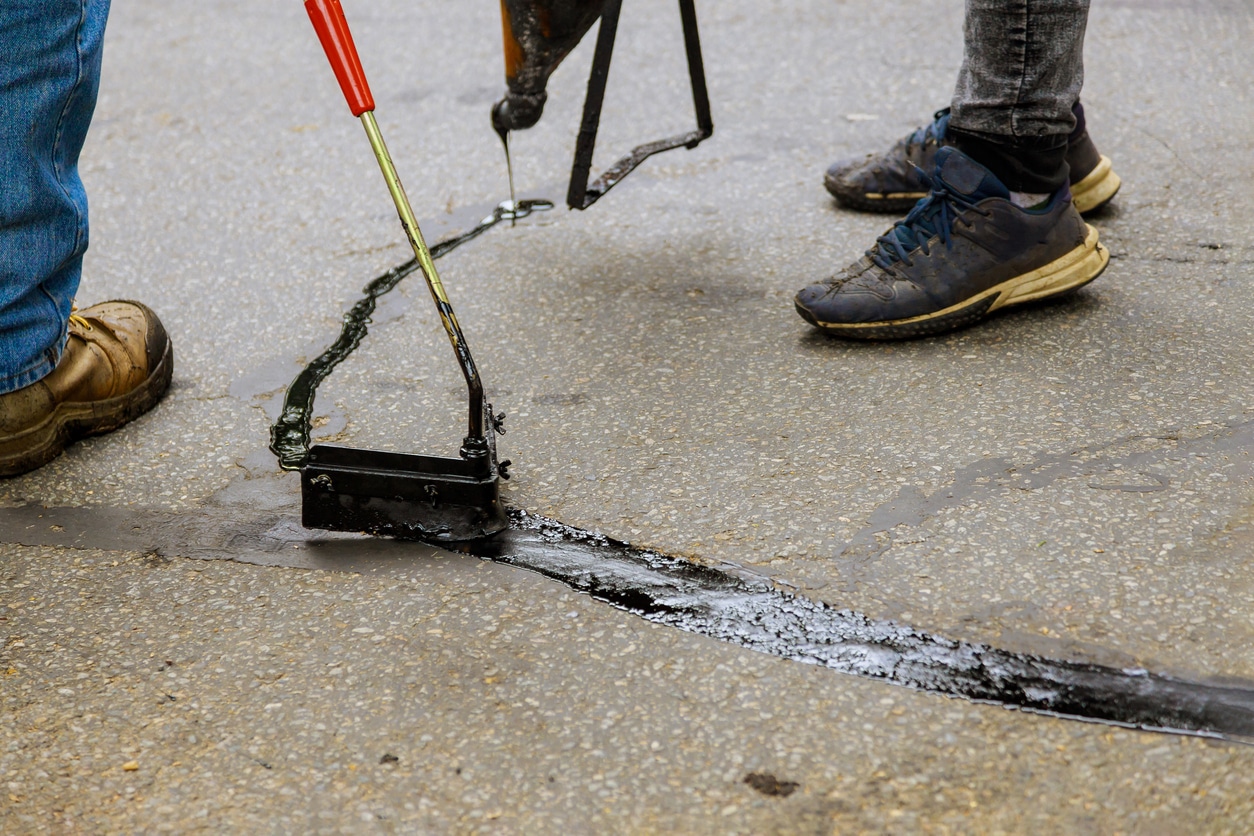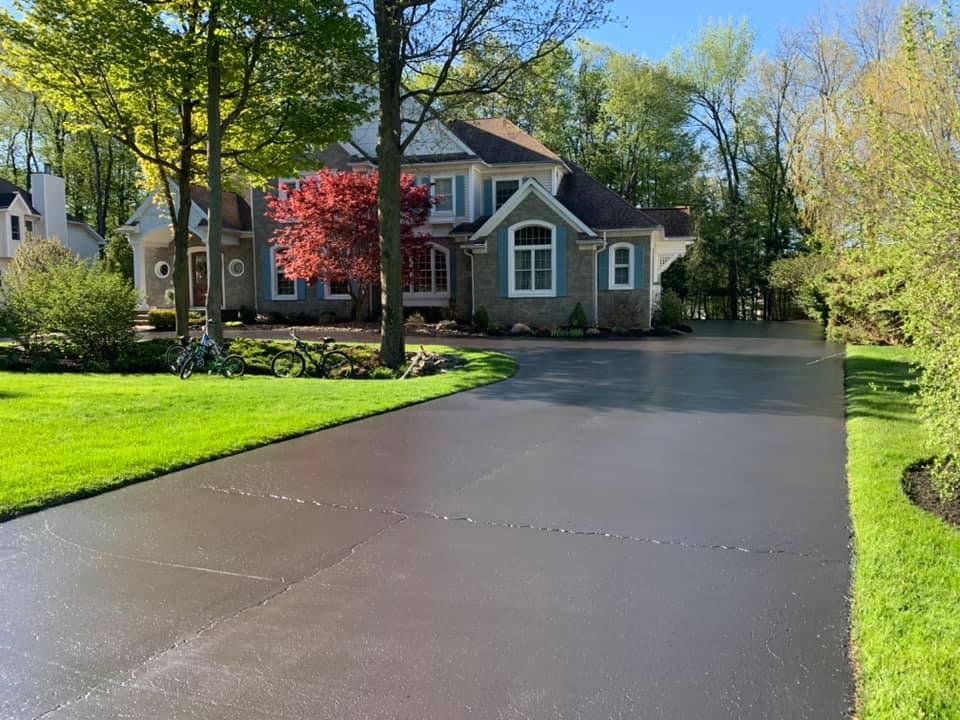Hot Mix Asphalt: A Lasting Solution for Pavement
Warm Mix Asphalt (HMA) has arised as a leading sustainable selection for pavement remedies, offering a myriad of environmental advantages and innovative technologies. As the demand for environment-friendly building practices expands, exploring the nuances of HMA's sustainability can provide valuable understandings into the future of pavement services.
Ecological Advantages of Hot Mix Asphalt

In Addition, Warm Mix Asphalt assists to alleviate urban warmth island impacts. Its dark color absorbs sunlight, minimizing the quantity of warmth mirrored back right into the atmosphere contrasted to lighter-colored sidewalks. This can lower ambient temperature levels in city locations, reducing the need for cooling and eventually reducing energy usage.
In enhancement, Hot Mix Asphalt adds to enhanced stormwater monitoring. Its permeable nature permits water to reenergize and infiltrate the pavement groundwater supplies, lowering overflow and the risk of flooding. These environmental advantages make Warm Mix Asphalt a lasting selection for leading roads and freeways.
Power Efficiency in HMA Production
Is energy efficiency a vital aspect in the production of Hot Mix Asphalt (HMA)? Absolutely. Energy plays a considerable function in the production of HMA, impacting both expense and ecological sustainability. One vital facet of power effectiveness in HMA production is using warm mix asphalt (WMA) modern technologies (hot mix asphalt). WMA permits the blending and placement of asphalt at lower temperatures compared to standard warm mix asphalt, leading to decreased energy intake throughout manufacturing. This process not just reduces fuel usage yet also lowers greenhouse gas discharges, making it a more eco-friendly option.
Additionally, advancements in plant innovations have actually led to even more energy-efficient HMA manufacturing procedures. By enhancing power use in HMA manufacturing, the industry can decrease its carbon impact while keeping top quality pavement products.
Recyclability of Warm Mix Asphalt
The recyclability of Hot Mix Asphalt (HMA) is a crucial facet of its sustainability and long-lasting environmental influence. HMA is just one of the most recycled materials in the USA, with over 100 million lots of recovered asphalt sidewalk (RAP) being recycled annually in new pavement building and construction. Recycling HMA provides a number of ecological advantages, such as lowering the requirement for virgin materials, reducing power usage throughout production, and decreasing the amount of waste sent out to land fills.
The procedure of reusing HMA includes milling the existing sidewalk, squashing it into smaller pieces, and blending it with new aggregate and asphalt binder to produce a recycled mix. On the whole, the recyclability of HMA plays a significant function in advertising sustainable practices within the sidewalk market.

Long-Term Performance of HMA
Asphalt pavements show toughness and resilience over an extensive duration, showing the long-term efficiency of Warm Mix Asphalt (HMA) The long life of HMA can be credited to its ability to stand up to rush hour loads, rough climate condition, and the results of aging. Studies have revealed that properly designed and correctly built HMA sidewalks can last for 20 years or more with regular upkeep. The trick to taking full advantage of the lasting performance of HMA hinges on utilizing high-grade products, following finest techniques in building, and implementing reliable upkeep approaches. Proper drainage, routine inspections, and prompt fixings are crucial for protecting the structural honesty of HMA sidewalks over time. Furthermore, innovations in HMA technology, such as using polymer-modified binders and cozy mix asphalt, have actually better improved the durability and long life of HMA pavements. By focusing on quality building and maintenance techniques, HMA official website continues to prove itself as a cost-effective and sustainable solution for resilient sidewalk infrastructure.

HMA: Sturdiness and Sustainability
Demonstrating both toughness and sustainability, Hot Mix Asphalt (HMA) has come to be a cornerstone in the construction of durable sidewalk infrastructures - regrading. HMA's durability comes from its ability to stand up to hefty loads, rough weather, and high website traffic volumes, making it a trusted option for roads, freeways, and flight terminal paths. The make-up of HMA, which generally consists of accumulations, binder, and filler, you can find out more plays an important role in enhancing its longevity and resistance to use and tear
Furthermore, HMA's sustainability hinges on its recyclability and energy-efficient production process. The capacity to recycle reclaimed asphalt sidewalk (RAP) in brand-new HMA blends lowers the need for virgin products and decreases the environmental impact of sidewalk building and click this site construction and upkeep. In addition, the power efficiency of producing HMA exists in its reduced mixing temperatures compared to various other sidewalk products, causing decreased energy usage and greenhouse gas discharges.
Final Thought
To conclude, hot mix asphalt (HMA) provides a sustainable service for pavement with its eco-friendly attributes. HMA's recyclability, energy efficiency in manufacturing, and long-term toughness make it an eco-friendly choice for road construction. By preserving natural deposits, reducing waste, and reducing greenhouse gas discharges, HMA plays a vital function in promoting sustainability in infrastructure development. Its capacity to alleviate metropolitan warmth island impacts even more underscores its importance in developing environmentally aware and durable sidewalk systems.
HMA is one of the most recycled products in the United States, with over 100 million heaps of recovered asphalt sidewalk (RAP) being reused every year in brand-new sidewalk building and construction.The process of reusing HMA entails milling the existing pavement, squashing it into smaller sized pieces, and blending it with new aggregate and asphalt binder to create a recycled mix.Asphalt pavements demonstrate longevity and durability over a prolonged duration, mirroring the long-term efficiency of Warm Mix Asphalt (HMA) Additionally, advancements in HMA innovation, such as the usage of polymer-modified binders and warm mix asphalt, have better boosted the longevity and longevity of HMA sidewalks. The ability to reuse recovered asphalt pavement (RAP) in brand-new HMA blends reduces the demand for virgin products and lessens the ecological influence of pavement building and maintenance.